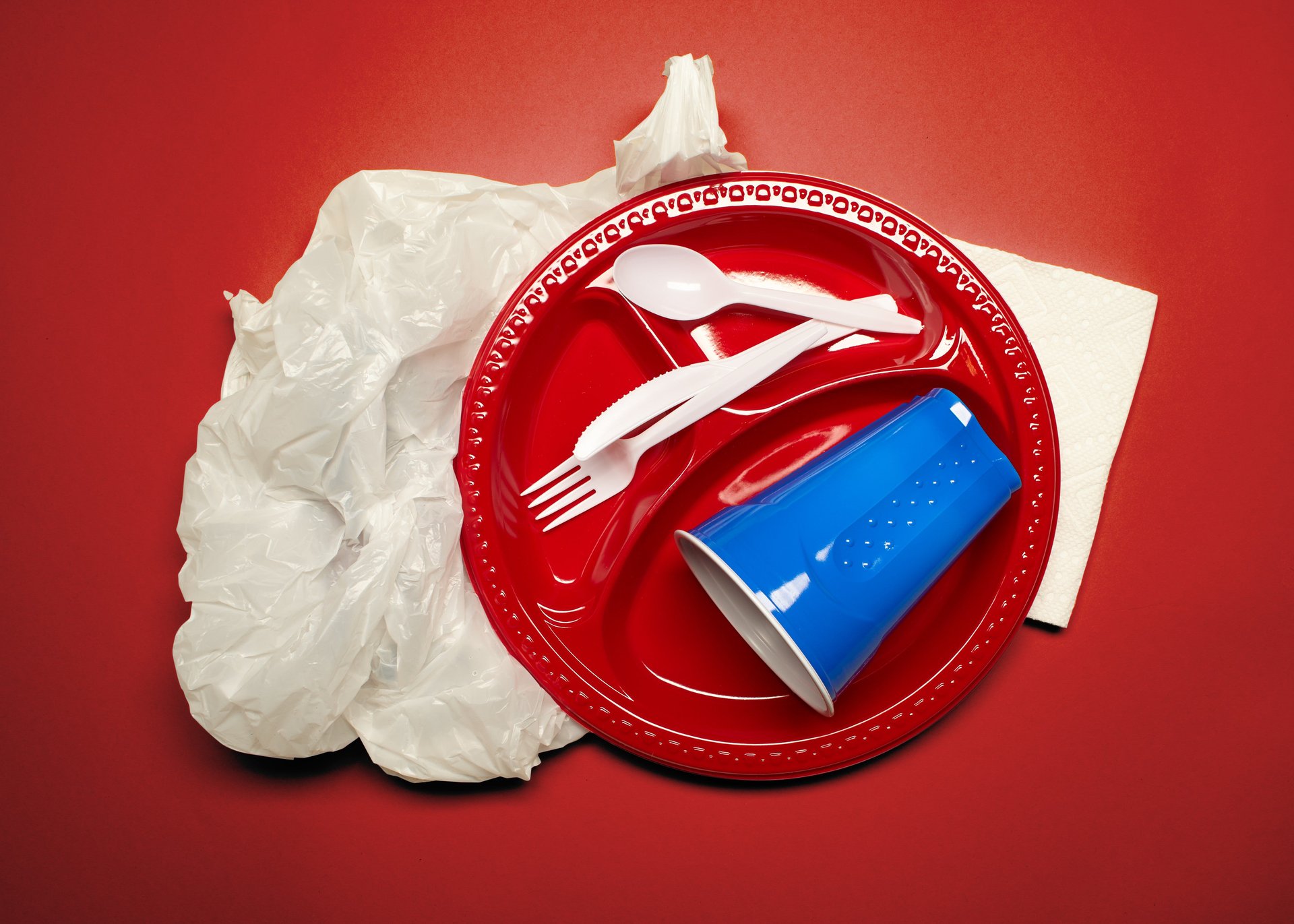An Italian taste tests American junk food
On the ground floor of the Smithsonian National Museum of American History, is an exhibition titled “Food: Transforming the American table 1950-2000” with Julia Child’s kitchen as its crown jewel. It traces the most important moments in the history of American food, from the invention of the refrigerator to the introduction of canned goods to the pervasiveness corn in processed foods.
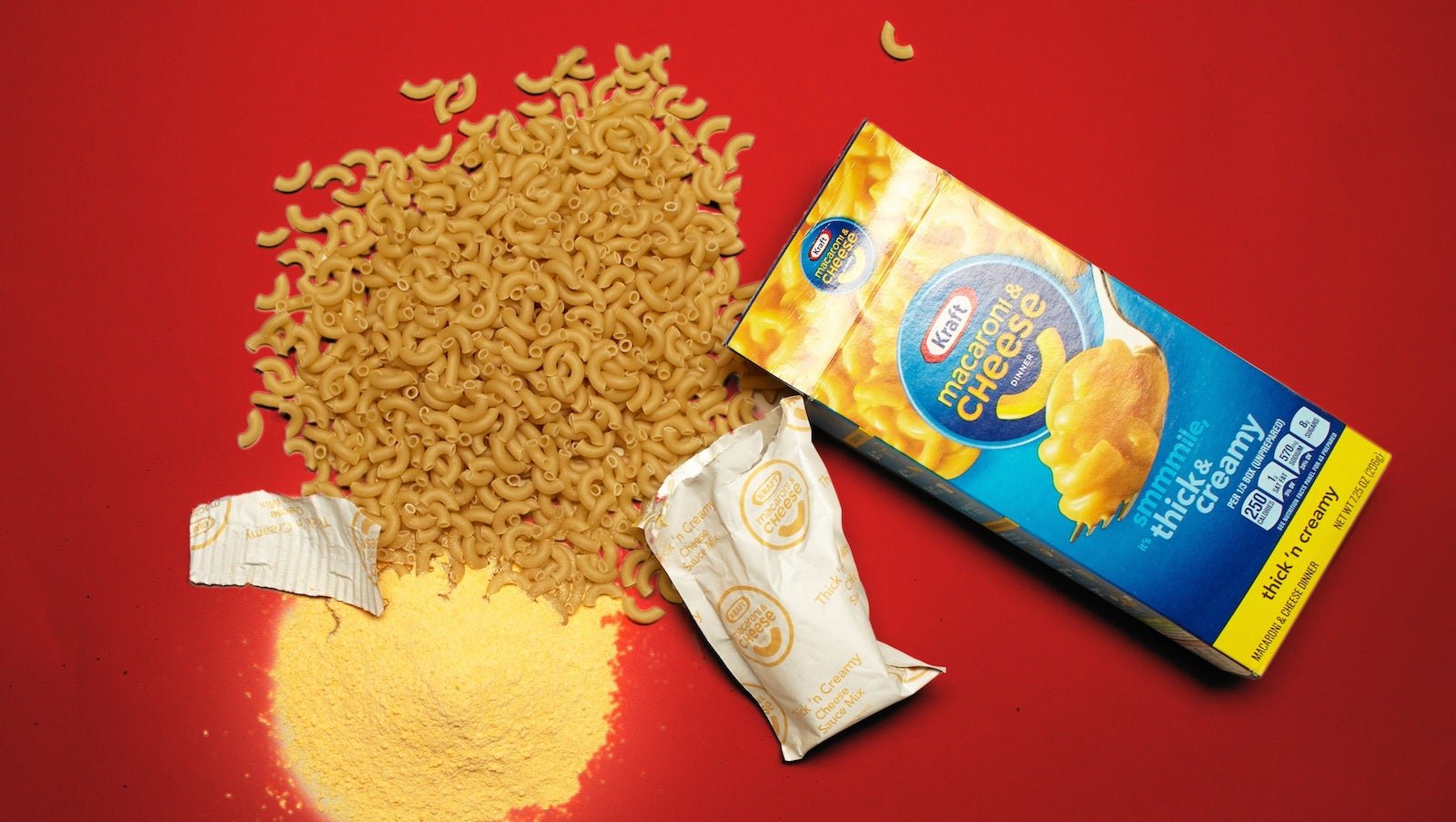

On the ground floor of the Smithsonian National Museum of American History, is an exhibition titled “Food: Transforming the American table 1950-2000” with Julia Child’s kitchen as its crown jewel. It traces the most important moments in the history of American food, from the invention of the refrigerator to the introduction of canned goods to the pervasiveness corn in processed foods.
Much of the exhibition is dedicated to a point of pride and shame in American cuisine: Food products—a staple of pantries, gas stations, and corner stores—are the quintessential embodiment of American eating habits. Junk food highlights two of the main characteristics of American culture: comfort (no cooking, no washing up, no cutlery) and unapologetic passion for enhanced tastes (cherry-flavored water anyone?).
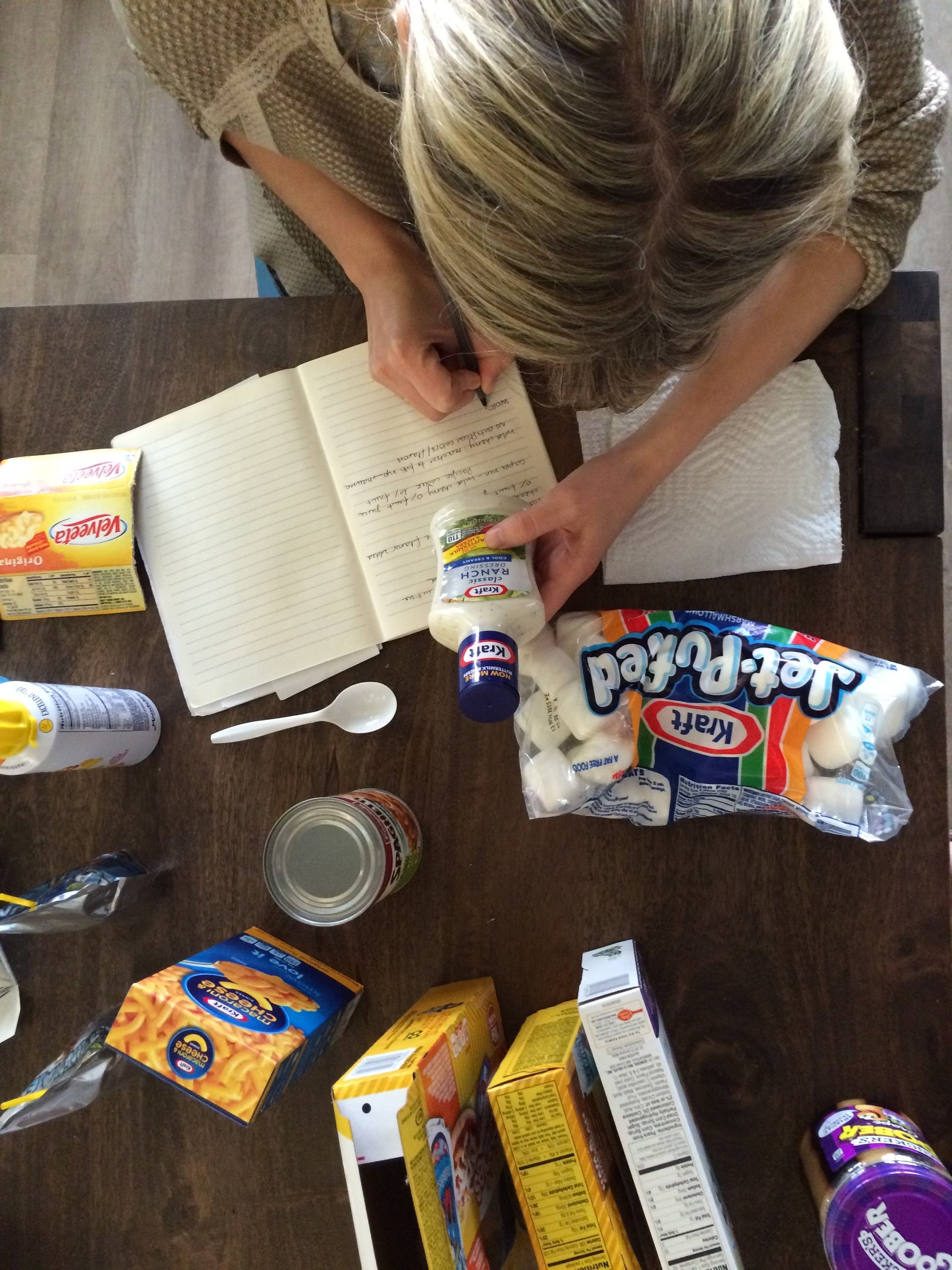
Processed food accounts for 70% of the US diet and Americans “consume more packaged food per person than their counterparts in nearly all other countries.” As an Italian who wasn’t even allowed higher quality Italian packaged food growing up in Bergamo (northeast of Milan)—the choices in America can be confusing and overwhelming.
In the aisles of an American grocery store, you’ll often find supply for demands you didn’t know you had, like spraying cheese on crackers, or eating spaghetti out of a can (which is basically sacreligious in Italy).
Processed food can lead the uninducted foreigner into tricky conversations, like this one I got caught in recently with a coworker:
Her: I can’t remember the last time I had Spaghetti Os.
Me: What is Spaghetti Os?
Her: It’s like spaghetti, but o-shaped.
Me: Oh, you mean like bucatini?
Her: No, it’s like—a ring.
Me: But that’s not spaghetti.
Her: Yeah, it’s spaghetti O.
Me: But spaghetti is a string.
Her: Sure, but spaghetti Os are little rings of spaghetti.
Me: But that’s not spaghetti…
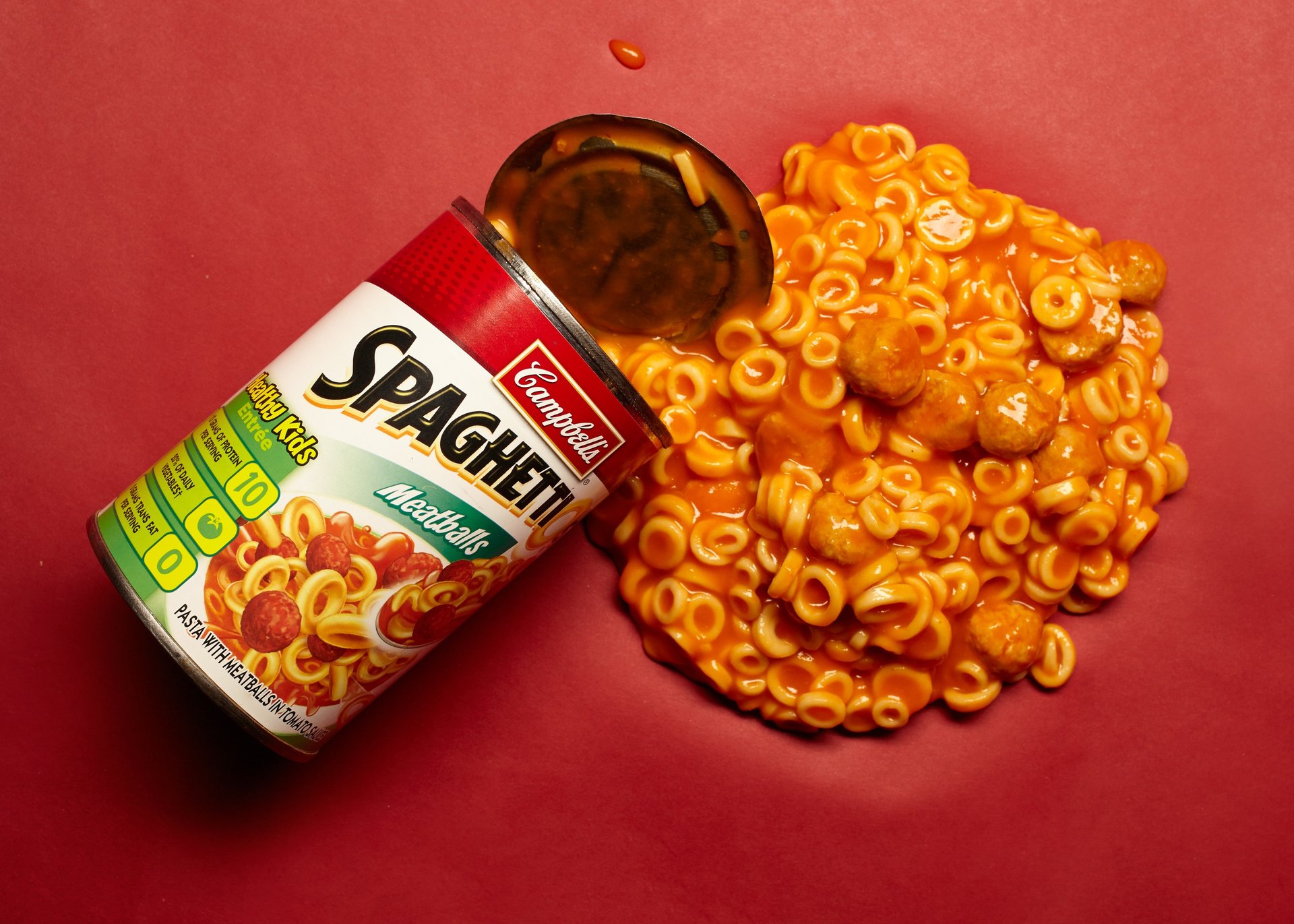
After living in the US for over two years, I thought it would be helpful to offer a guide of some of the most popular American processed foods. I asked Americans at Quartz and on Twitter for help narrowing down a few staples (that don’t require cooking) and set out to taste them all (a task not always pleasant, for us children of Italia).
Here is a short guide that only scratches the surface of the American pantry, the great monument to human creativity and food adaptability.
Velveeta
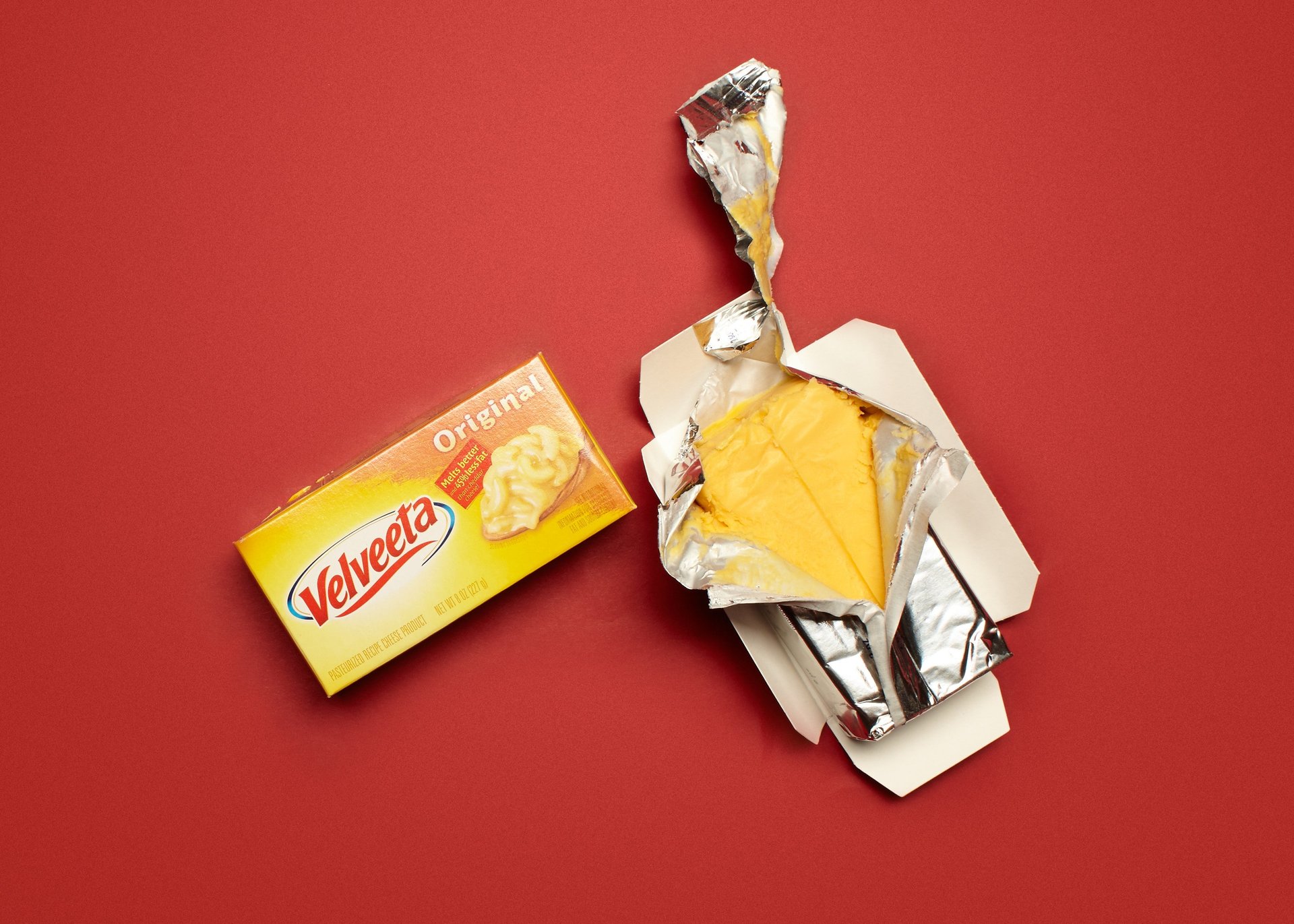
What is it?
Considered a “staple of American cuisine,” Velveeta is, officially, a “pasteurized recipe cheese product.” Cheese-like, and gooey, especially when melted—as per serving suggestion—Velveeta isn’t meant to be consumed on its own and solid, something I regrettably only found out after tasting.
Taste
Cheesy, a little like cheddar (though this Italian is not entirely sure Cheddar is actually a cheese), but sweeter. The consistency can be a little floury and greasy yet the taste is somewhat addictive—especially due to an aftertaste that seems to demand for more.
Curious ingredients
Modified food starch, which does not sound like something that should be in cheese. Nor does corn, canola oil, or annatto (color) for that matter.
Contains corn?
Yes, as dried corn syrup.
Relevant nutritional notes
According to the packaging, Velveeta contains 45% less fat component of cheddar cheese (of unspecified making), or about 15g fat per 100g.
Closest Italian equivalent
Crema Belpaese, a spreadable cheese that, in the words of an honest-to-god American at Quartz “tastes like Laughing Cow but richer.”
Slim Jim
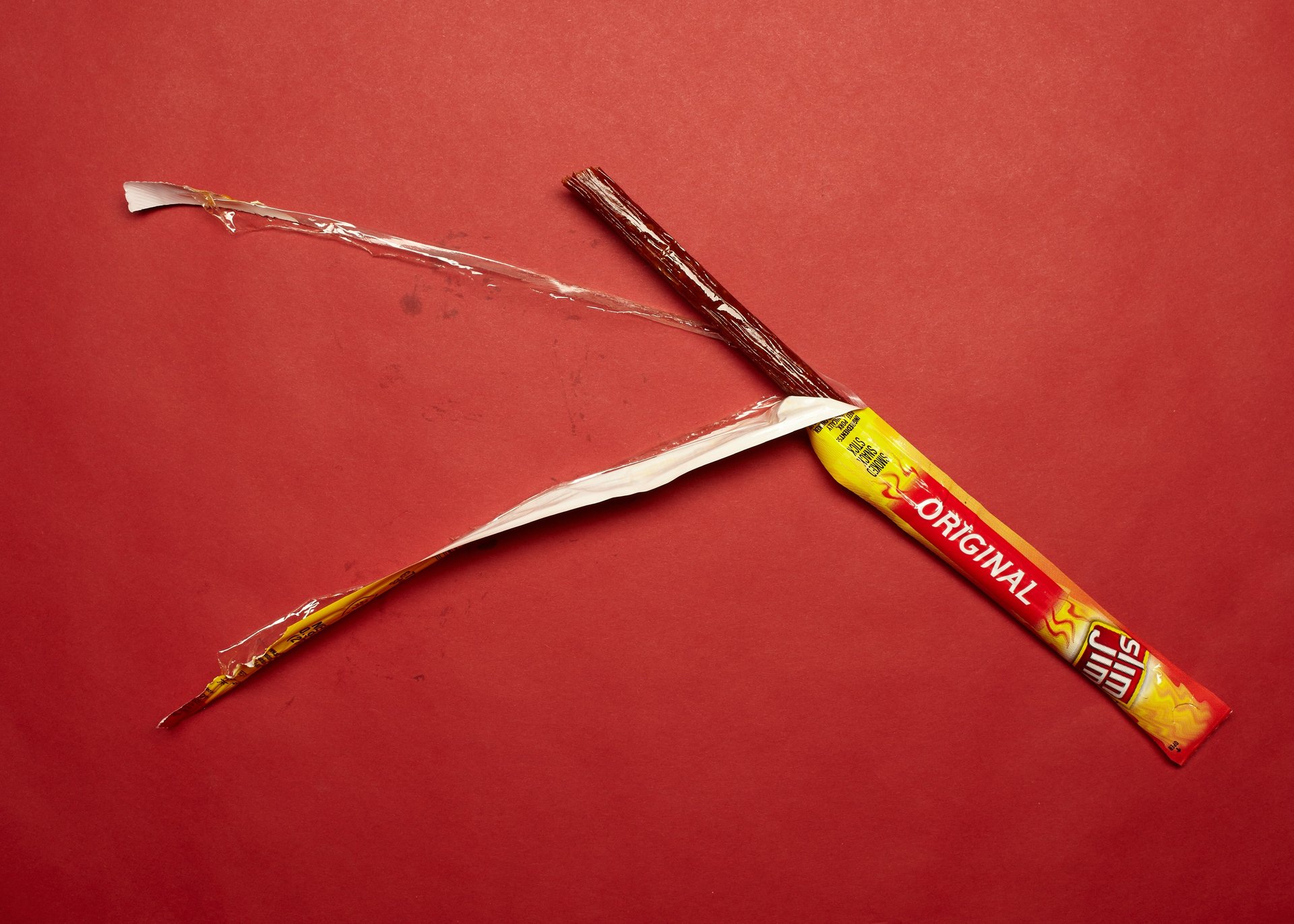
What is it?
In its Giant Slim version (very long and very slim), Slim Jim is a “smoked snack stick” or strip of meat—chicken, pork and beef, all combined. A hardware store and gas station staple, Slim Jim can be found in some grocery stores, though not necessarily next to the other meat products but rather by the cashier, with other snackable treats.
Taste
Slim Jim does not really taste like any of the meat it’s made of—it’s slightly sweet and has a spicy aftertaste. The outside is somewhat crunchy yet oily, while the inside is gamey and likely to get stuck in between teeth upon chewing.
Curious ingredients
Mechanically separated chicken, lactic acid started culture, caramel color, paprika, extracts of paprika.
Contains corn?
Yes, as corn syrup.
Relevant nutritional notes
Contains nearly as much carbs (4g) as protein (6g).
Closest Italian equivalent
Strolghino di culatello: A popular type of salame.
Lunchables
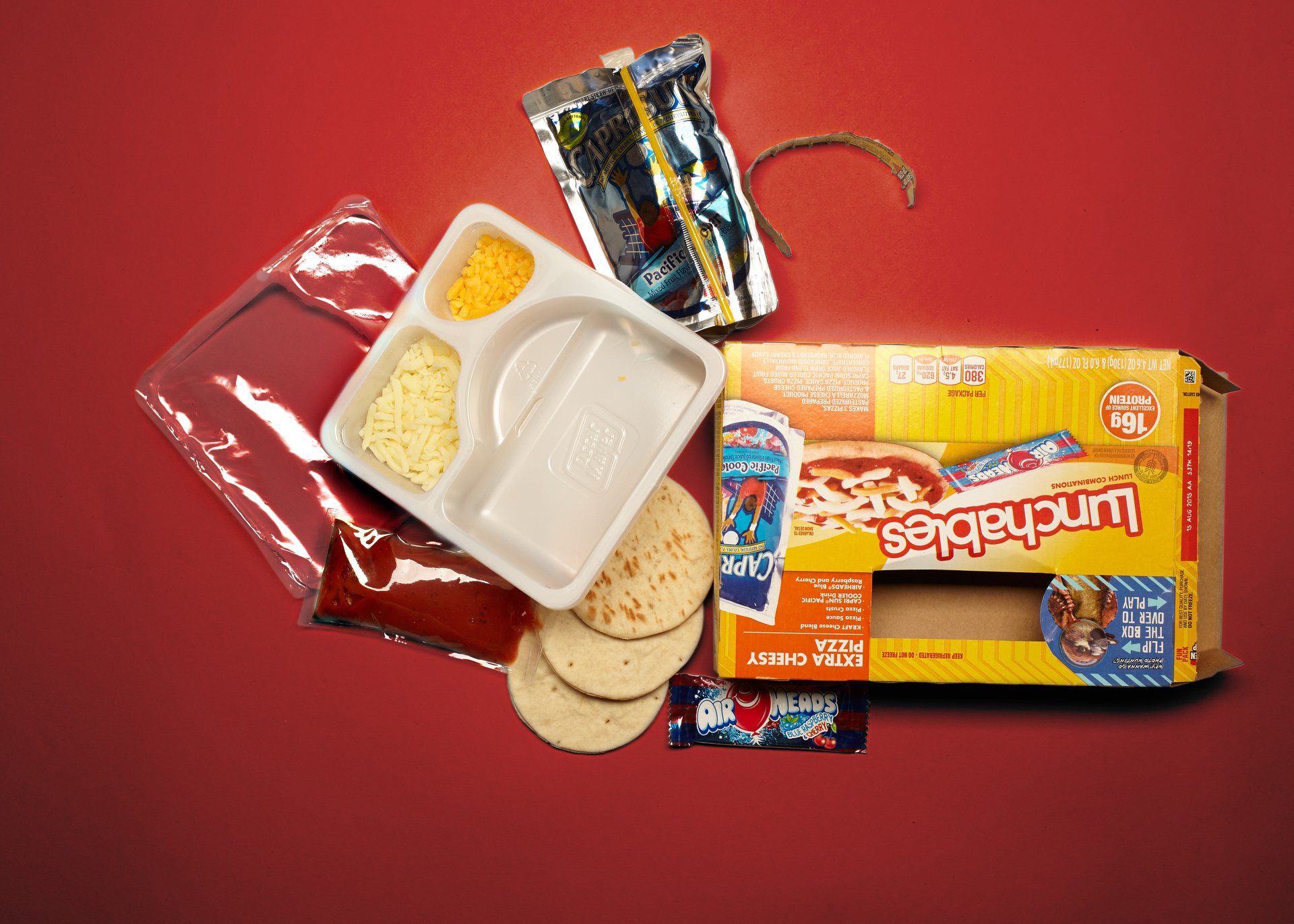
What is it?
Available in several iterations, Lunchables is a pre-packaged lunch combination for kids, and it’s found among refrigerated goods. The most iconic combination features ingredients that can be combined to make a (cold) pizza snack. The pizza Lunchables box includes Kraft cheese blend, Pizza crusts, Capri Sun Pacific Cooler drink, AirHeads Blue Raspberry and Cherry.
Taste
The entirety of this box contains one vaguely tolerable flavor: the cheese blend. To be more specific: the pizza base is floury, cold, and at the same time too hard but not crunchy enough, too sweet and too tasteless. The sauce (squeezed cold out of a packet to top the base) has a consistency similar to ketchup, though it’s loaded with fake garlic and fake onion flavors so strong the dried basil can’t do anything to counter it. The addition of the cheese, decent on its own, can nothing to transform the pizza (though perhaps it should not be called such) into something any palatable. This is by far the best part of the box.
Capri Sun (pronounced Caprì, like the island, which is actually pronounced Càpri, America) has no flavor equal, which is not a compliment. The closest relative are those fruit-flavored syrups that pharmaceutical companies misguidedly promote as having pleasant taste. The total quantity of Capri Sun that can be drunk before getting nauseous is exactly a quarter of a sip, which is not possible. I advise drinking Capri Sun with a sparkling water chaser.
What is amazing about Lunchables is that, right after providing a first-hand experience of the worst taste in the world, it actually unveiled that it only was the second-worst. Because the worst flavor in the world is actually that of blue raspberry and cherry AirHeads. Airheads tastes like the mature fruit of a plastic tree, only sweeter. It’s also tough to chew and sticks to the back of your teeth for what seems like the whole of eternity.
Curious ingredients (or lack of thereof)
Cellulose powder, xanthan gum, artificial colors number 40 (red), 1 (blue), 6 (yellow), 5 (yellow).
AirHeads contain no actual blue raspberry, presumably because, despite being commonplace among American candy, blue raspberry is not an actual fruit. Capri Sun contains pear, grape, orange, apple and pineapple juice concentrates, which together makes up the 10% fruit juice contained in the beverage. This is impressive when compared to other Capri Sun flavors: the cherry-flavored drink, which contains “0% fruit juice.” (Author’s note: the cherry flavored Capri Sun rivals Air Heads for worst taste known to humankind.)
Contains corn?
Yes, as high fructose corn syrup (in Capri Sun) and corn syrup (in AirHeads).
Relevant nutritional notes
“16 g—excellent source of protein,” as advertised on the box.
Closest Italian equivalent
I thought about it long and hard, but I officially give up thinking of a comparable Italian product. You win this one, America.
Ranch Dressing
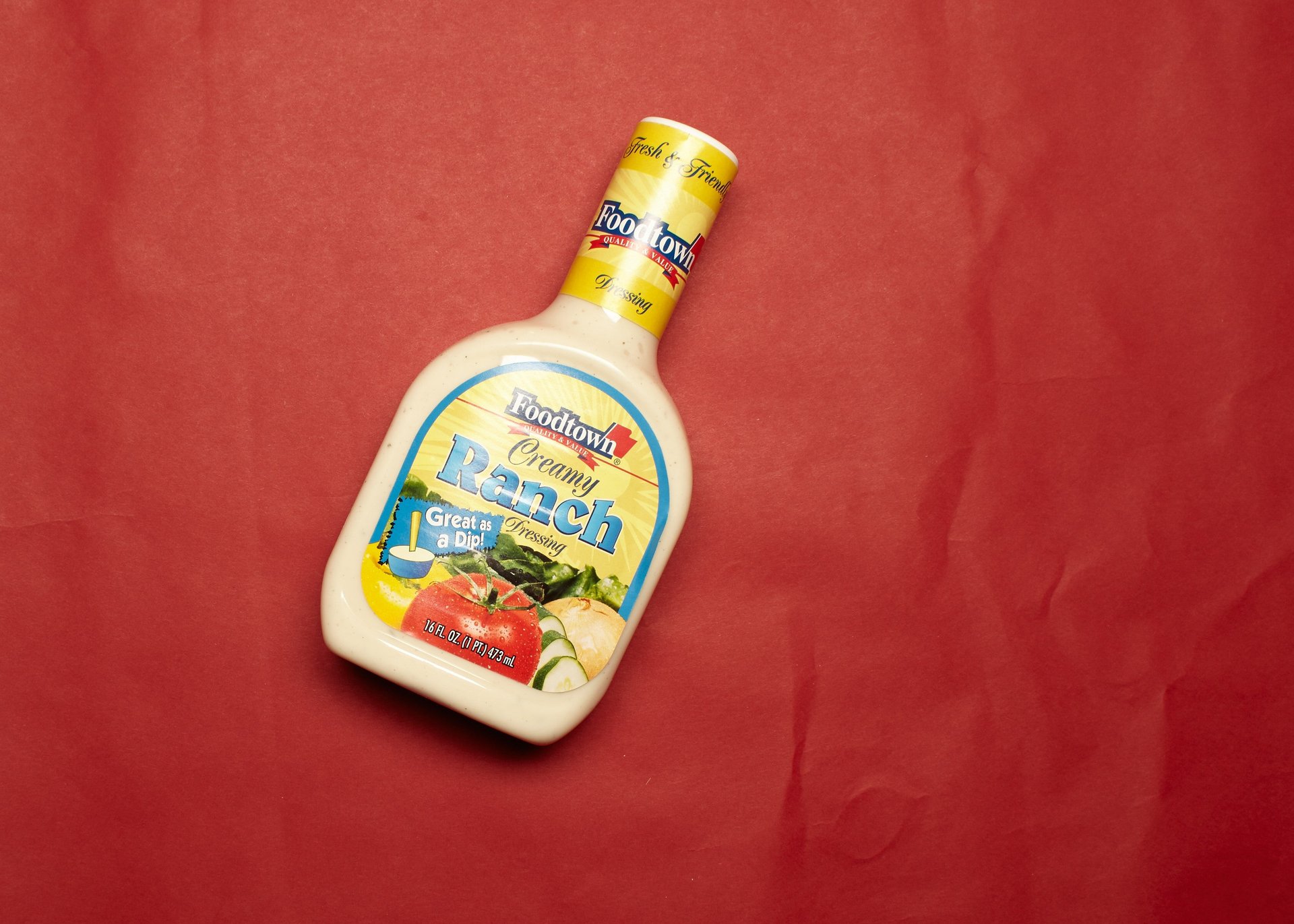
What is it?
A quintessential American salad condiment, ranch dressing is a creamy salad dressing that also “happens to be really good on pizza,” according to those in the know at Quartz.
Taste
I picked the Kraft Ranch dressing as I was told it’s “classic.” It’s not bad at all—it tastes slightly acidic, which makes the name rather appropriate. It’s hard to pin down where its flavor comes from without reading the label, which remains somewhat vague, probably to protect a secret recipe, though it assures “more buttermilk and herbs.”
Curious ingredients
Xanthan gum, prominent presence of disodium, in form of disodium guanylate, disodium inosinate, calcium disodium edta. These are all curious mainly because none of them sounds like something I would want to pour over my salad.
Contains corn?
This brand doesn’t, although other varieties of ranch dressing does.
Relevant nutritional notes
Of the 110 calories per tablespoon of ranch dressing, 100 come from fat.
Closest Italian equivalent
A combination of extra virgin olive oil, balsamic vinegar or lemon, salt, pepper. As my editor noted, this combination is not creamy—a fair point; however the only cream I ever put on salad in Italy is mayonnaise to make Olivier salad, which a) is Russian (although popular in Italy), and b) is not a salad.
Easy Cheese
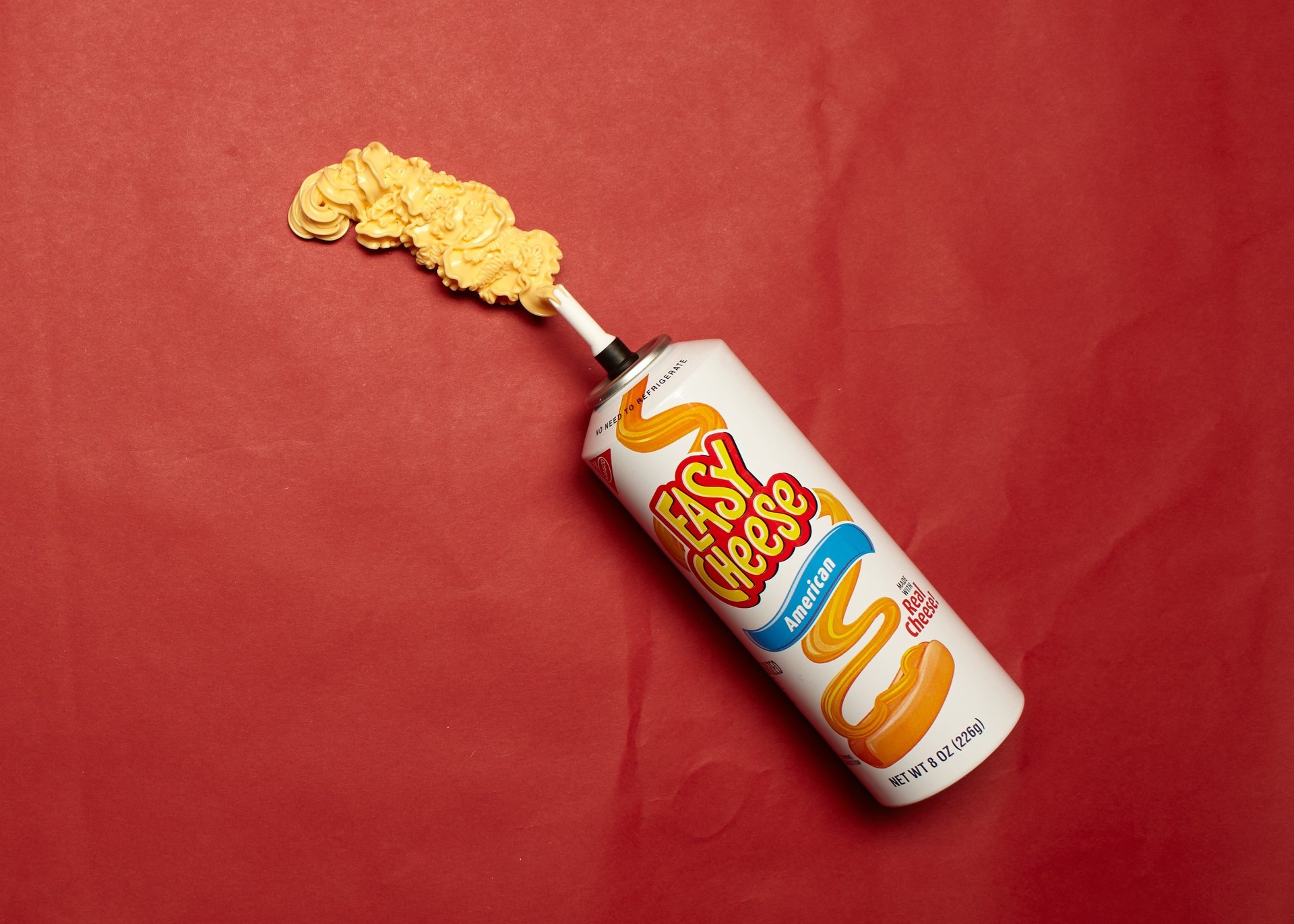
What is it?
A “pasteurized cheese snack,” easy cheese is a version of the more popular Cheese Whiz—or spray cheese. Reassuringly, the box reads prominently that it’s “made with real cheese!” though it does not need to be refrigerated, which makes me suspicious. In the grocery store, Easy Cheese is found next to the crackers it is meant to be sprayed onto.
Taste
Easy cheese isn’t bad—especially while the memory of Capri Sun and AirHeads lingers. Its taste is similar to Velveeta’s, though perhaps a little less floury and with a nicer aftertaste. Further, Easy Cheese is available in exciting Cheddar ‘n Bacon, American (short for American cheese), and Sharp Cheddar flavors.
Curious ingredients
“Cheese culture,” several milk-related product (milk, milk protein concentrate, lactic acid, sodium caseinate). It’s basically everything you need to make cheese, and then some, and yet this is not actual cheese, which is astonishing.
Contains corn?
This brand doesn’t, though other varieties of spray cheese do.
Relevant nutritional notes
“Excellent source of calcium,” as advertised on the box. One serving of Easy Cheese (32g) contains 20% of the average daily required intake of calcium. However, my investigation found that 1 serving of Velveeta (28g) also provides 20% of the average daily required intake of calcium, which means Velveeta is arguably a better source of calcium even if it doesn’t go around calling itself excellent.
Closest Italian equivalent
See Velveeta.
Fruit Roll-ups
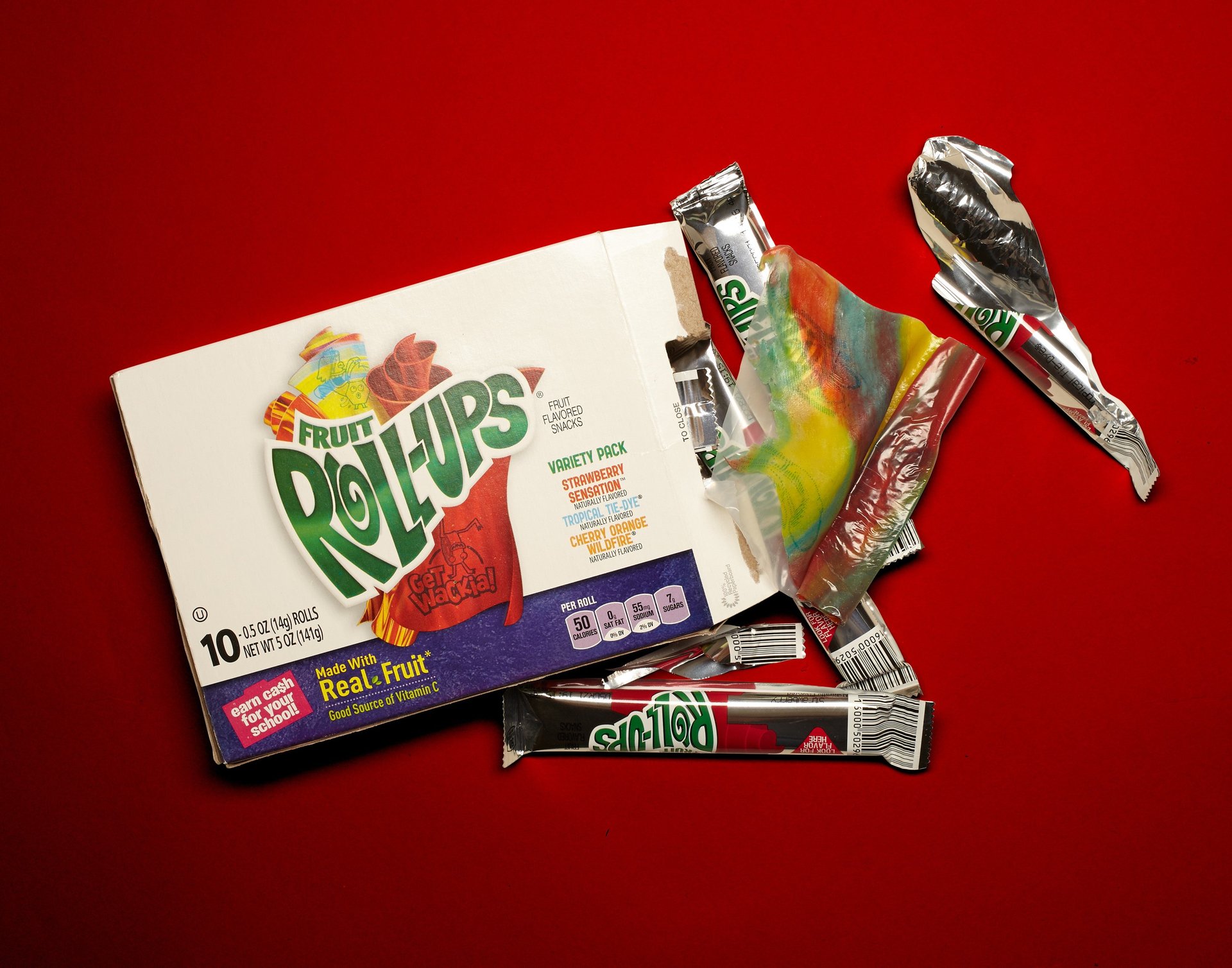
What it is
A “fruit flavored snack,” fruit roll-ups are essentially a thin sheet of candy that the packaging instructs to “peel from plastic backing before eating.” As the experts of Quartz office know, placing the candy on the tongue will transfer the “tongue tattoo.” Afterward, the roll-up, can be eaten, rolled, torn apart or otherwise. There is no elegant way to eat fruit roll-ups.
Taste
Fruit roll-ups taste fruity, though it’s hard to tell which fruit is predominant. Its shape, which according to the experts “is everything,” takes a bit of getting used to.
Curious ingredients
Pears (from concentrate) are the sole fruit ingredient of the “tropical tie-dye,” naturally flavored variety.
Contains corn?
Yes, as corn syrup and dried corn syrup.
Relevant nutritional notes
A portion of fruit roll-up provides 10% of the daily recommended intake of Vitamin C, which is more than any other surveyed item with the exception of Lunchables (15%).
Closest Italian equivalent
Actual fruit?
Goober
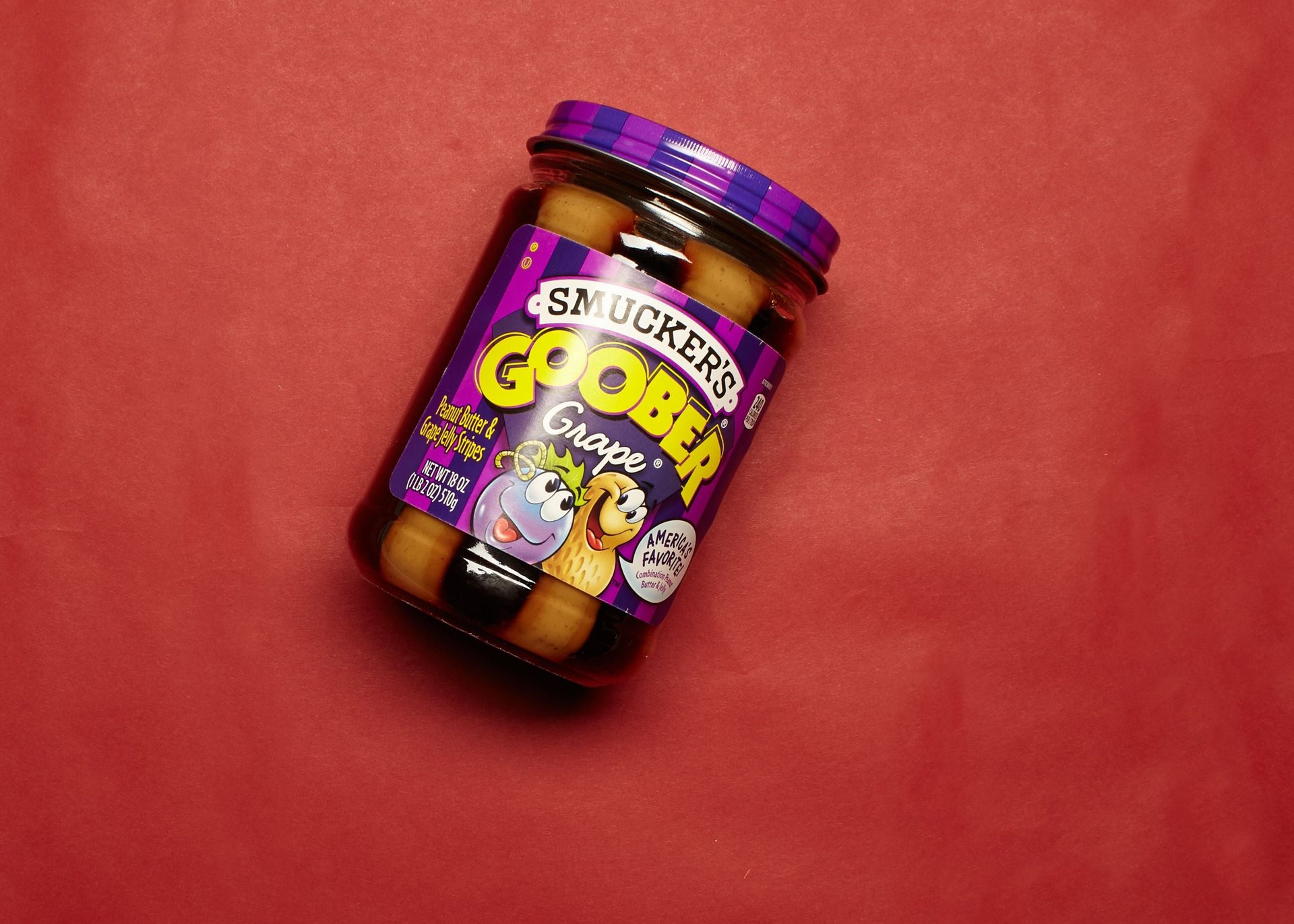
What is it?
Goober, “peanut butter & grape jelly stripes” is a mix of peanut butter and grape jelly, which comes in alternating stripes next to one another in a jar, which creates a pretty pattern. As the packaging informs, this is “America’s favorite combination peanut butter & jelly” and is one half (or two thirds?) of a fundamental component of the American child’s diet: peanut butter and jelly sandwiches.
Taste
Peanut butter tastes like peanut butter: essentially, Nutella without chocolate. The combination of salty and sweet, like chocolate and salt, is a good idea but peanut butter and jelly (pb&j) isn’t quite as delicious. Part of it is that the peanut butter is just too rich; the jelly, which is like jam but with more sugar and less fruit, tastes like nothing but fake fruit and sugar.
Curious ingredients
No actual fruit, as jelly is made with fruit juice. Also note: Peanuts is written in bold because up to 1.4% American children are reportedly allergic to peanuts.
Contains corn?
Yes, as high fructose corn syrup and corn syrup.
Relevant nutritional notes
As per the label’s detailed information, a portion of Goober Grape contains 0% of the daily recommended intake of vitamins A and C.
Closest Italian equivalent
Nutella
Marshmallows
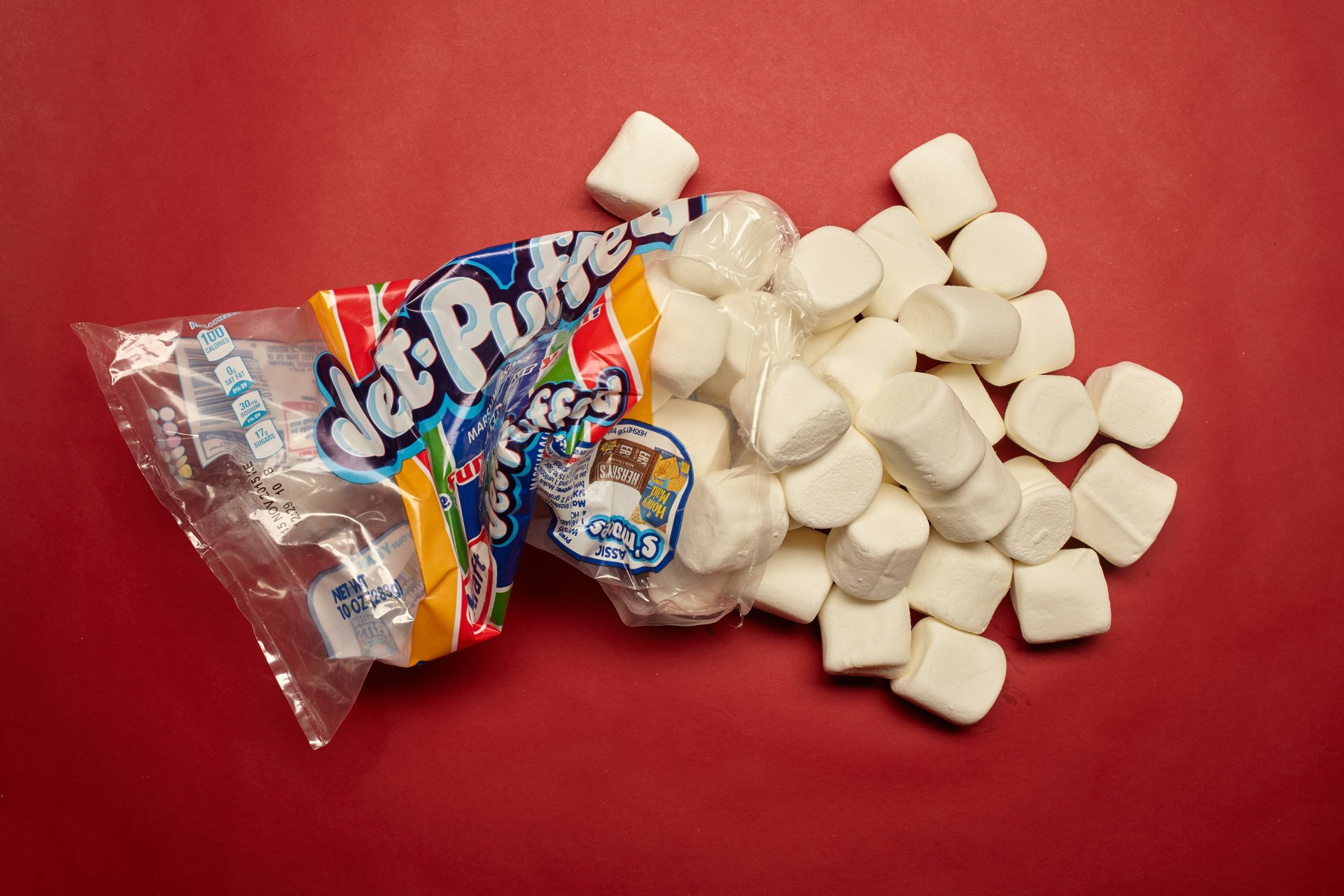
What is it?
Marshmallows are a fluffy confection Americans consume in various forms—in hot chocolate, melted with Rice Krispies to create the eponymous Rice Krispies Treat, or in s’mores (a preparation that involves roasting marshmallows by a fire, chocolate and graham cracker). Due to their extreme fluffiness, marshmallows represent a choking hazard, and the packaging warns that they should always be consumed under adult supervision.
Taste
Marshmallows taste like nothing if nothing were too soft and tasted too sweet.
Curious ingredients
Blue 1 color (the marshmallows containing it are white).
Contains corn?
Yes, as corn syrup.
Relevant nutritional notes
As written prominently on the packaging, marshmallows are “a fat free food.”
Closest Italian equivalent
There are several types of “caramelle,” or candy, in Italy, but none of them can claim itself as iconic as marshmallows.
